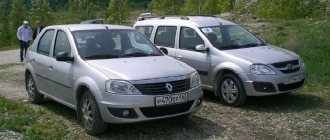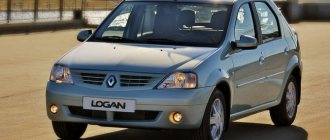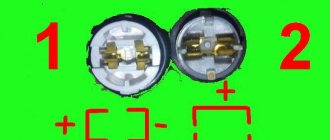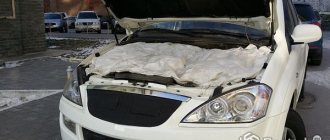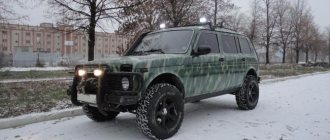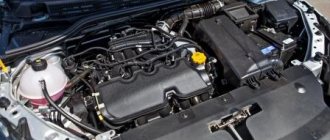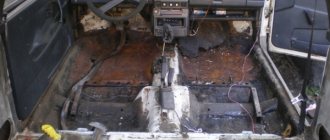Hyundai Getz
Trouble-free, friendly, spacious and playful without any discounts. A dream car for beginners and intermediate drivers and even for a small young family. It has some kind of trunk (254-1130 l) and a salon that can accommodate five. Not particularly comfortable, but accommodating.
The Getz has good equipment, including front airbags, air conditioning, ABS and power steering. For 200 thousand the set is very worthy. You get a car in which you can move about everyday life quite safely and comfortably. Moreover, it is reliable.
Also read: Cheap “Korean”: KIA Rio
If the previous owners did not engage in “self-mutilation” and did not kill it on purpose, then its 1.3-1.4-liter engines are capable of driving 300+ thousand km with proper care. When handled carefully, the clutch lasts up to 100 thousand km. And even if it’s less, the replacement won’t hurt your pocket - 4,300 – 5,000 per set.
Cheapness concerns not only the clutch. Getz is a popular car. There are a huge number of duplicates for it, a large assortment on sale - there will be no problems with servicing.
A significant advantage over many competitors is “age”. Within 200 thousand you can find a completely alive copy after restyling. There, the mileage will be minimal, and the condition of the body will be decent.
For comparison, a conventional VW Polo in this budget will be much more aged, “travelled” and tired.
Before purchasing a Getz, we strongly recommend checking its history. As an analysis of randomly selected reports from the database shows, only 5 “Koreans” out of 20 do not have legal and technical problems. Most cars - 9 out of 20 - are sold with a duplicate title. We found Getz cars with repair work due (5 out of 20), unpaid fines (3 out of 20), changes made to the design (1 out of 20) and after an accident (4 out of 20).
Three cars had their mileage skewed. This Getz, for example, has covered almost 138 thousand km:
Also read: Used Hyundai Solaris I: what to expect from it
Nissan Almera
You can even get a Nissan for 200,000 rubles, it will be an Almera model from 2001-2003. Both gasoline and diesel engines can be installed under the hood. The volumes are different: 1.5 and 1.8 liters. Diesel engine with a volume of 2.2 liters.
In most cases, for 200,000 rubles you can get an Almera with a manual transmission, but if you’re lucky, you can find an interesting car with an automatic transmission. Almera is good because the body does not rust, thanks to the factory anti-corrosion treatment, so if it was owned by a more or less normal owner, then there will be no problems with it during operation.
Ford Fusion
A completely explosive machine by the standards of the second half of the 2000s. Tall, spacious, spacious, quiet. This car could do much more than the price tag might suggest.
The main thing, of course, is space. Being a car in a lower class, the Fusion gives passengers the comfort of a Focus of the same era, albeit with simpler trim and a calmer design. The trunk is larger than that of competitors of those years: 337 liters by default, 1,175 with the backrests folded. This is enough for seedlings at the dacha and for transporting strollers.
Also read: Car freaks: 10 ugliest cars
The global problem is the robot. Driving with it is uncomfortable due to jerks and hesitations during shifts, and besides, the clutches in such transmissions do not last long.
The good news is that within the price range of 200 thousand rubles there are quite a few very good examples with both a base 1.4 liter engine (80 hp) and 1.6 liter versions (101 hp).
There are outlandish diesel options (1.4 l/68 hp), but they are expensive to maintain.
What’s also good is that “Fusion” as a whole has fewer problems in the secondary than the same “Getz”. Of the 20 cars, half were “clean”. The most common problem is road accidents (6 out of 20).
Two cars were sold with an estimate for repair work and unpaid fines, one with a duplicate title.
Also read: Ford Mondeo IV: is it worth taking the old man
What first car should a novice driver buy?
As already noted, we will not consider completely finished “cramps”, nor will we consider too expensive ones. Each person should look into his own wallet and evaluate his capabilities.
However, many years of experience show that for the vast majority of owners of new licenses, the best option is a car under 200 thousand rubles. This is an amount that allows you to find the optimal balance between four main indicators: price, quality, reliability, comfort.
And yet, 200,000 rubles is an amount that, from a purely psychological point of view, does not cause rejection among parents. Let's be honest, the vast majority of young people are helped to buy cars for novice drivers by their parents. Conclusion: if you want to count on the help of the older generation, reduce your requests and limit yourself to the specified amount.
Optimal car class for beginners
It is clear that there are no comrades according to taste and color. And first of all, you need to focus on your own preferences. However, in controversial situations, it is worth considering the following tips.
- If a person purchases a car while improving his own driving skills, then, naturally, it would be reasonable to think about the liquidity of the product, that is, about the possibility of selling it in the future. Definitely, the price will fall in any case, especially if you take into account the driving style of a novice driver. But the reduction in cost, both in absolute value and in percentage terms, will be much greater for luxury cars. It will be minimal for the most popular models and brands. This is natural; the higher the demand, the greater the likelihood of selling profitably in the future.
- The higher the class, the traditionally larger the geometric dimensions - dimensions. It is important to note here that when determining which car to choose for a novice driver, remember about your insufficient driving skills. Don’t overestimate your capabilities, buy adequate (standard) sized cars. Don’t chase prestige and “coolness,” especially in big cities. Oh, and you'll have trouble with parking! On the other hand, very miniature compact cars also raise some questions. In particular, in the future it will be very difficult to switch to classic models, having gotten used to small sizes.
- And a little about the bodies. I recommend first of all paying attention to hatchbacks and SUVs. A long car (station wagons, sedans) is an extra problem not only when parking, which is natural, but also when maneuvering, especially at high speed. But here the consequences can be much more serious than a dented bumper in the parking lot. Although we should not exclude situations where a large trunk is important, for example, for an individual entrepreneur transporting goods or working tools. Although in this case, it’s probably worth thinking about beads that can be controlled from a cat. "B", or small truck.
Which car should I buy, Russian or foreign?
How many copies have been broken on the Internet and in real life regarding this matter. The age-old, and even rhetorical, question of what is better: a newer domestic car or an old foreign car? You can easily find both supporters and opponents of each direction. Although let’s be honest, lately the difference has been gradually, albeit slowly, leveled out.
Much more important than the country of origin is the assessment of the following characteristics:
- the quality of the main components and assemblies, such as the engine, transmission, chassis (if at least one of these positions is not in order, then you will definitely be tormented with endless repairs);
- prospects for repairs, availability of spare parts for free sale (it is very difficult for car enthusiasts, owners of rare brands and models, when parts, even simple ones, have to be brought from abroad);
- in our time, this position is not very relevant, but nevertheless, pay attention to such an aspect as the popularity of the model among hijackers;
- maintainability (if it is easier to deal with domestic cars on the road if a malfunction occurs, then with foreign cars, some of them, it is more and more difficult - you cannot do without a tow truck);
- comfortable driving (before buying a car for a beginner, take it for a ride, try to “steer”, feel the comfort).
Domestic cars are certainly cheaper. Moreover, many foreign manufacturers have located their production facilities in the Russian Federation. As a result, it can be extremely difficult to determine whether a car is domestic or foreign.
So, let's summarize. Domestic cars are cheap, easy to repair, unpretentious, but they are definitely inferior to even the most budget foreign cars in safety and reliability. On the other hand, foreign cars can be “killed” by the cost of repairs.
Gearbox type
It is almost impossible to switch a “seasoned” driver with several decades of driving experience from a manual transmission to an automatic transmission. He will push with all his arms and legs. However, the overwhelming majority of the best cars for beginners will have an automatic.
Until habits have been formed when shifting gears, it is worth taking this issue very seriously. If in the future a person does not plan to buy a vehicle with a manual transmission, then it is definitely necessary to start with an automatic transmission. And vice versa, if you have plans for some “desired” mechanics, you shouldn’t start with an automatic machine from the word “absolutely”.
In general, as many professional analysts from the automotive world believe, and I certainly agree here, automatic transmissions are the future; mechanical solutions will gradually become history. Another question is that with a high degree of probability we will not notice this phenomenon yet.
Which first car should I get in terms of ground clearance?
When choosing which used car is better to buy for 200,000 rubles, which I mentioned above, pay attention to the ground clearance.
Here it is worth considering two diametrically opposed opinions:
High ground clearance is extremely beneficial, since a beginner will not damage the bottom on a bad road or a “missed” sleeping policeman, or damage the bumper when parking at the curb. When it comes to small settlements with traditional off-road conditions, there is no choice at all.
Young people love to drive fast, including in big cities where the roads are excellent. Here, naturally, a small clearance is important, since it increases stability at speed.
Drive unit
Which used car is better to buy? We can definitely talk about front-wheel drive options. Upon careful analysis, it is quite difficult to find rear-wheel drive cars in this market segment. Some executive sedans are cited as an example, but if they fall into the price range we are considering, then such proposals are not even worth evaluating. Will this car even start?
On the other hand, front-wheel drive cars require more professional training from the driver when driving in winter and on wet asphalt surfaces. A slight mistake and you could end up either in a ditch or in the oncoming lane. And this is already a threat of a serious accident.
All-wheel drive models are also not worth choosing. As a rule, they have quite large dimensions. And I already noted that for a novice driver this is not the best option. Although, if you are a fisherman or hunter, then you can think about this option.
Engine
More recently, when determining which used car was best to buy, there were only two options: gasoline and diesel. Today, so-called hybrids and all-electric power units have been added.
I would not consider the last two options as a proposal for a beginner, since even from a professional’s point of view they are poorly adapted to our realities, and even more so it will be difficult for a novice car owner, both with management, refueling, and with maintenance.
Diesel engines are more economical and fuel costs will certainly be lower. But gasoline systems are less picky about the quality of fuel, and they start up much better in severe frosts (as we know, they happen here). In general, in my opinion, the advantages and disadvantages of both types of engines can be characterized as 50% to 50%. Conclusion: the choice should be made based on personal preferences and interests.
Peugeot 206 sedan
A car greatly underestimated by the audience. Hyundai Solaris, released literally three years later, blew up the market, and the Iranian Peugeot 206, made according to the same patterns, went unnoticed. Either popular distrust of the “French” broke through, or its unsightly appearance, but the 206 sedan did not become a hit. This is confirmed by the Autocode statistics. Over the past three months, the model has been tested only 6,900 times.
But the buyer only benefits from the unpopularity of Pyzhik. For more or less live options they generally ask for 100 thousand, that is, almost the same as for a Priora.
But the level of performance and quality of finishing are incommensurable. The 206 sedan inherited from the hatch of the same name a European interior with a nice design and a decent level of assembly. Important options include a radio with CD, air conditioning (a rarity in budget cars of those years) and even an IsoFix mount for a child seat.
The choice of engines is not very wide. The most popular engines are 1.4 liters and 75 liters. With. There are 1.6-liter naturally aspirated engines paired with an automatic transmission (AL4, does not like overheating).
The only specific feature that can be highlighted is the timing belt drive, which needs to be monitored and the belt changed on time.
If your choice falls on the “French”, keep in mind that this is a rather problematic model. 9 out of 20 cars are sold after an accident, 10 out of 20 - with a copy of the title. Less common are cars with repair estimates - 5 out of 20, low mileage - 4 out of 20, and restrictions on registration with the traffic police (2 out of 20). One model was sold after working in a taxi:
Only 4 out of 20 specimens were found without any problems.
Also read: Peugeot 407: complete analysis of the French shark
The best used cars under 200 thousand rubles
- Renault Logan;
- Ford Focus;
- Opel Vectra;
- Honda Civic;
- Mazda 323F;
- Volkswagen Golf;
- Nissan Almera;
- Nissan Maxima;
- Mitsubishi Lancer;
- Hyundai Accent;
- BMW 3 and Audi A4.
There are other options, but we will consider foreign cars for 200,000 rubles, which are far from new, but will last for some time. We’ll talk about the domestic auto industry in another article.
Skoda Fabia I
The first Fabia makes me want to copy the description of the Hyundai Getz. It is also simple, friendly, ideal for a novice driver, and inexpensive to maintain.
But Getz, of course, is more durable. “Fabia” is still more of a German car, a thoroughbred. This is its strength and this is also its weakness. Spare parts are more expensive than for a “Korean”, and the need for them may arise more often. Just look at the steering racks, which rarely last 60,000 without leaks or knocks. True, they have long been able to repair them without replacement, but this is not always possible.
The clear advantages are the workmanship of the best German colleagues: the front console with hints of soft plastic, strict forms, the absence of tasteless tacky leatherette inserts. Plus, a record-breaking interior by class standards: even a tall driver can sit comfortably in the back. The Fabia is also quiet and fun to drive.
If it were not for the relative high cost of maintenance, it would be called the best choice. But no, because Fabia I is full of problems.
After analyzing the reports, we found that only 5 cars out of 20 had no problems. 11 were sold with a duplicate title, 4 - after an accident, and three each - with incorrect mileage, calculation of repair work and unpaid fines. One copy each had traffic police restrictions and design changes.
Also read: Which Skoda Rapid to choose
Which first car should you choose?
There are a variety of opinions on this issue, both from professionals and experienced amateurs. Among them, there are some tips that are already outdated from a practical point of view. For example, there is an opinion that it is recommended to study (including the first time after obtaining a license) using an old, beat-up car. This is justified by the fact that “it’s not a pity” and “difficulties harden you, then it will be easier to drive a new one.”
Once upon a time, a car was a rarity; you had to stand in line for many years to buy one. At that time, such an approach was justified. Today it has lost its relevance. Buying a car is not difficult. And most importantly, there is no need to torture yourself with incomprehensible “training” if you can immediately ride in comfort.
On the other hand, the average beginner should not buy a very expensive and “sophisticated” vehicle from the VIP class - the risks of serious financial losses are too great. So which car is better to buy? Let's try to figure it out.
Before you go to the market or to the salon, you need to sit down and determine the following directions for yourself (and I will try to comment on them from the position of novice drivers):
- the amount you are willing to allocate;
- car class;
- manufacturer country;
- gearbox type;
- clearance size;
- drive design;
- engine;
- new or used.

